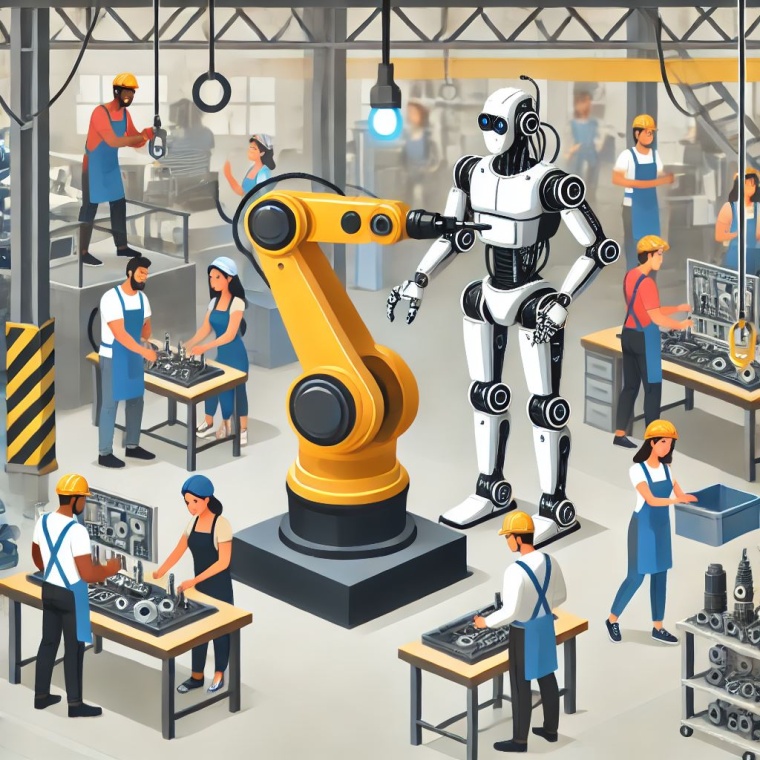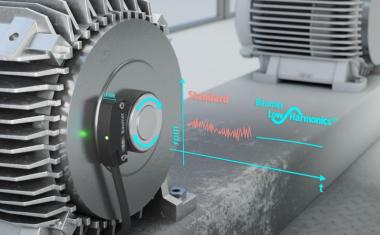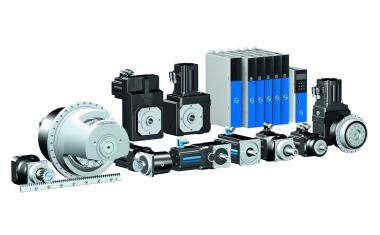Top 5 robotics trends worldwide in 2025
These are the most important trends that will shape robotics and automation in 2025

The market value of installed industrial robots has reached an all-time high of 16.5 billion US dollars worldwide. Future demand will be driven by technological innovations, new market developments and the opening up of new business areas. The International Federation of Robotics reports on the key trends that will shape robotics and automation in 2025.
1. Artificial intelligence – physical, analytical, generative
The trend towards increased use of artificial intelligence continues: in robotics, various AI technologies help to perform a wide range of tasks more efficiently.
Analytical AI can be used to process and analyze large amounts of data collected by robot sensors. This helps to react to unforeseen situations or changing conditions in public spaces or in the production of “high-mix, low-volume tasks”. Robots equipped with image processing systems analyze their work steps to recognize patterns and optimize workflows. The goal, for example, is to increase speed and precision.
Robot and chip manufacturers are currently investing in the development of special hardware and software that simulates real-world environments. This so-called physical AI enables robots to train themselves in such virtual environments. The experiences gained in the process replace traditional programming. Such generative AI projects aim to create a “ChatGPT moment” for physical AI.
AI-driven simulation technology for robots is likely to become established in both typical industrial environments and service robotics applications.
2. Humanoid
robots in human form attract a great deal of media attention. The vision: robots will become all-purpose tools that can independently load a dishwasher and work on an assembly line elsewhere. Robotics start-ups are working on these humanoid all-rounders.
Industrial manufacturers, on the other hand, are concentrating on humanoids that initially perform individual tasks. Most of these pilot projects are underway in the automotive industry. This industry has always played a pioneering role in the development of robotic applications. This applies to industrial robotics as well as to logistics and warehousing. However, it remains to be seen whether humanoid robots will present a commercially viable and scalable business case for broad industrial application, especially in comparison to existing solutions.
Nevertheless, there are numerous applications that could benefit from the humanoid form and offer market potential for robotics, for example in logistics and warehousing.
3. Sustainability and energy efficiency
Meeting the United Nations' (UN) sustainable development goals and corresponding regulations worldwide is becoming an important prerequisite for qualifying as a supplier. Robots play a key role for manufacturers in achieving these goals.
In principle, robotics with their precision work reduce material waste and improve the output to input ratio in manufacturing processes. These automated systems also ensure consistent quality, which is essential for products with a long service life and minimal maintenance requirements. In the manufacturing of environmentally friendly energy technologies such as solar cells, batteries for electric cars or recycling plants, robots are essential for cost-effective production. They enable manufacturers to quickly scale up production to meet growing customer demand without compromising on quality or sustainability.
Furthermore, robot technology is being improved to make machines more energy efficient: the lightweight construction of movable robot components, for example, reduces their energy consumption, as do new standby modes that put the hardware in an energy-saving parking position. In gripper technology, there are advances in the application of bionic solutions, for example to achieve a strong gripping force with very low energy consumption.
4. new business areas and customer industries for robotics
In the manufacturing industry, there is still a great deal of potential for automation with robots. Most companies in the manufacturing industry are small and medium-sized enterprises (SMEs). However, high initial investments and total cost of ownership currently represent a hurdle for SMEs when it comes to using industrial robots. Business models such as robot-as-a-service (RaaS) are designed to make it easier for companies to benefit from robotic automation without having to invest a fixed amount of capital. RaaS providers that specialize in specific industries or applications can quickly deliver sophisticated solutions. In addition, low-cost robotics offers solutions for potential customers for whom a high-performance robot would be overkill. Many applications have low requirements in terms of precision, load capacity and lifespan. Low-cost robotics addresses this new “good enough” segment.
Beyond the manufacturing industry, the construction industry, laboratory automation and warehousing are among the interesting new customer segments. Across all industries, demand is also being driven by an expansion of domestic production capacities in strategically important industries, the importance of which has become clear to politicians as a result of the recent crises. Automation enables manufacturers to relocate production capacities closer to the customer without sacrificing cost efficiency.
5 - Robots to combat the labor shortage
According to the International Labour Organization (ILO), the global manufacturing sector continues to suffer from labor shortages. One of the main reasons for this is demographic change, which is putting pressure on labor markets in leading economies such as the United States, Japan, China, the Republic of Korea and Germany. While the specific effects vary from country to country, overall they are a cause for concern throughout the supply chain.
The use of robots significantly reduces the impact of labor shortages in manufacturing. By automating dangerous, dirty or repetitive tasks, human workers can focus on more interesting and higher-value tasks. Robots take over work such as tiring visual quality control, painting tasks that are harmful to health, or heavy lifting. Technological innovations such as ease of use, collaborative robots or so-called mobile manipulators help to fill gaps in the work process whenever and wherever they are needed.











